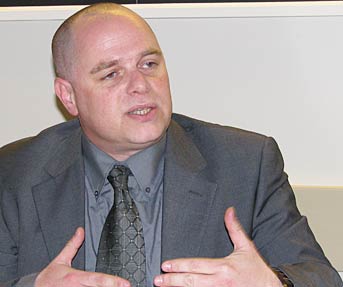
|
|
Yizhar Hess, executive director and CEO of the Masorti movement in Israel.
| |

The Death of Orthodox Secularism
-- Yizhar Hess
There are "sacred cows" that it is a pleasure to see brought to slaughter. This is especially true when we are speaking of kosher slaughter – a slaughter that heralds the death of "Orthodox Secularism". To be Orthodox-Secular is to be a secular Jew for whom the synagogue that he/she does not attend is Orthodox.
On Rosh Hashanah eve, the Panels Institute published a poll under the title, “Battles over the Worshippers." The poll investigated where Israelis go on Rosh Hashanah. The findings were nothing short of extraordinary. 46% of Israelis, according to the poll, intended to visit a synagogue over Rosh Hashanah and 69% of them planned pray in an Orthodox synagogue. So far there is nothing surprising. What is striking is the finding that 22% of the Israelis who do pray intended to do so at either a Masorti (Conservative) or Reform synagogue. Let's talk numbers: approximately 1.7 million would go to an Orthodox synagogue; however, more than half a million responded that they would pray in Masorti or Reform synagogues. We are talking here of approximately 556,000 men and women.
This is an amazing finding particularly because it is impossible. Yes, non-Orthodox synagogues were filled to capacity, but there were not hundreds of thousands of worshippers. Even if we pulled out all the stops, such a number simply could not physically fit in. The Masorti Movement in Israel has 52 Kehillot and Havurot. The smaller Reform Movement counts itself at 25 Kehillot. If we were to divide the half million Israelis who indicated that they spent the holiday with us, that would mean more than 370,000 men and women would have come to our Masorti Kehillot. However, the Israeli Masorti Movement does not have synagogues sufficiently large or accommodating – and neither does the Reform Movement. So what is going on here?
The old myth that if the people are going to synagogue it is an Orthodox synagogue, simply no longer applies. They may have visited, at some point, a Masorti synagogue for a holiday prayer and saw that family seating is a nice concept. They may have participated in a wedding conducted by a Masorti rabbi. Perhaps they took part in a Bar or Bat Mitzvah somewhere where the child, female or male, was honored in an equal manner. They caught a glimpse and saw something truly good. This did not drive them to attend synagogue weekly, or monthly, or even yearly. But the people of Israel have modified their labels. They are Hilonim, not Datiim, and they are Masorti-Hilonim, or Reform-Hilonim. They are no longer Orthodox-Hilonim.
It is no surprise that Orthodox synagogues are less attractive to the secular public; the disgust over the Orthodox establishment in Israel is well earned. Despite this, one could have expected that at least on the holidays the Orthodox would have functioned as the main public service, given that we all – all tax payers – pour funds onto them.
If we break down the state budget and see how the money is allotted – directly and indirectly – to the educational, cultural, and religious Orthodox institutions (both "knitted"/nationalistic and "black"/ultra-Orthodox), we can understand how, despite the hundreds of millions they receive annually, Orthodoxy has in fact gone bankrupt. How they have moved so far away from the general public, the secular public.
Yet, there is still a reason for optimism. Take a look at what is happening at the non-Orthodox synagogues in the last few years. That which politics cannot bring about, the street will.
Yizhar Hess is the Executive Director and CEO of the Masorti Movement
Did you enjoy this article?
If so,
- share it with your friends
so they do not miss out on this article,
- subscribe
(free), so you do not miss out on the next issue,
-
 donate
(not quite free but greatly appreciated) to enable us to continue
providing this free service. donate
(not quite free but greatly appreciated) to enable us to continue
providing this free service.
If not,
|